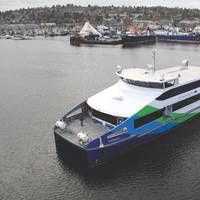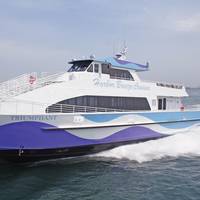Ferry Tales: Having a Ferry Good Time

Despite of some of the lowest fuel prices experienced in the last eight years, demand for ferry construction is at a seemingly all time high. The focus on building new ferries kicked off in early 2013 and the sustained interest is the continued result of an unleashing of pent up demand. Fleets have been aging and infrastructure needs to be built up in order to accommodate the future demand for commuter ferry travel once fuel prices return to and surpass their once familiar norms.
Short Seas in the Long Run

Building for the possibility of shortsea shipping involves many variables. The novel concept of rebirthing short sea shipping into what it once was or could be, may remain just that, a novelty. It would be paramount to overcome the “my way, on my terms” philosophy that so heavily drives traffic away from the seas and inland waterways and onto asphalt freeways that cannibalize natural resources. The plight of road warriors may even further drive coastal commuting straight into Davy’s Locker with the rapidly expanding development of non-marine-use shore side infrastructure.
Ferry Funds Allocated
The Transportation Equity Act for the 21st Century (TEA-21) provides discretionary funding for the construction of ferry boats and ferry terminal facilities. The TEA-21 includes a requirement that $20 million from FY 2000 be set aside for marine highway systems for use by the States of Alaska, New Jersey and Washington. The funds have been allocated as follows: $10 million for the state of Alaska, and $5 million each for New Jersey and Washington. These funds are available for the construction or refurbishing of ferry boats and ferry terminals, with certain restrictions. Additionally, Congress earmarked $11.2 million of funding for 12 specific constructions of ferry boats and ferry terminal facilities. There was considerable demand for the discretionary funds.









